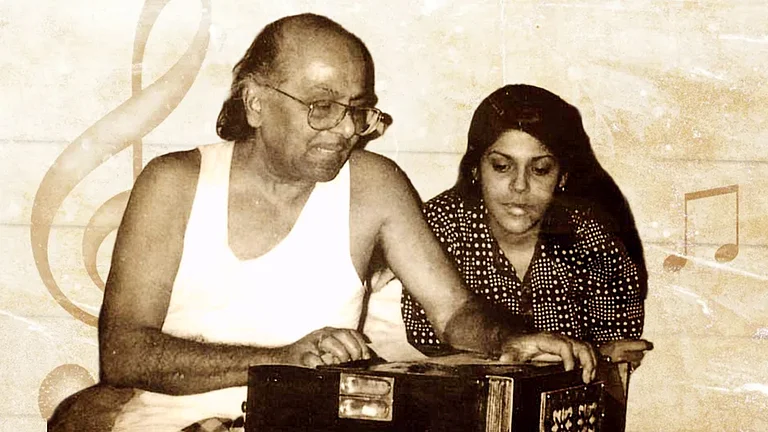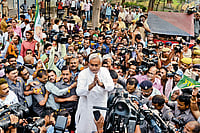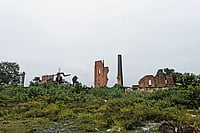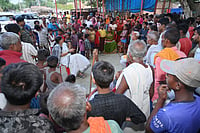The year was 1997. Fourteen-year-old Rajesh Sada, who lived in Raghunathpur village in Saharsa, Bihar, was playing in a field when a woman approached him. She said she would take him to a mela. “I had never stepped out of my village. So the idea excited me,” says Sada, now 38. It was a trap. He was trafficked and taken all the way to Ramnathi village in Allahabad, Uttar Pradesh and dumped in a kaaleen (carpet) making facility where a dozen other children were already working. He was held captive for three years. “Work would start at 6 am and end at midnight. He was not allowed to go out, he was not paid. “We had to cut wool to make kaaleen. The knives were sharp and we had cut marks on our hands. The woollen dust would stick on the wound and it hurt,” he says.
He was rescued in 2000 along with the other children. The Uttar Pradesh administration labelled him a bonded labourer and issued a certificate which made him eligible for various benefits. He received Rs 20,000 as immediate relief, a monthly pension and later, a piece of land. “I was getting a pension of Rs 150 a month which increased to Rs 200 and now I am getting Rs 400,” he says.
Not everyone is as fortunate. Binay Manji (name changed), 13, from Gaya, Bihar, was trafficked to Jaipur, Rajasthan, to work at a bangle-making unit early this year by a middleman. He was promised a monthly wage of Rs 400. He, along with other children, were forced to work for more than 12 hours and were not paid. They were not allowed to step out. His working conditions were as deplorable as Sada’s, but after he was rescued, he did not get a certificate, which deprived him of all the benefits.
“Earlier, most of the rescued children were given bonded labour certificates, but now only 10 to 15 per cent are given the certificates,” says Ghuran Mahato, an activist who runs the Koshi Lok Manch and has been working against bonded labourers in the Kosi area for more than four decades. “If a rescued child is given a bonded labour certificate, then the government will have to pay a huge sum as compensation. I think that could be the reason.”
The process of certification has changed over the years. Earlier, these certificates were issued by the district administration soon after the raids and rescue. The current process is a bit lengthy and the onus is on the rescued child to prove that he falls in the category of bonded labourer. The Sub-Divisional Magistrate (SDM) visits the shelter home where a child is accommodated after the rescue. The official register contains more than two dozen questions. Depending on the answers, the SDM concludes if the child had been a bonded labourer or not.
Activists say children are often not in a position to answer these questions, especially after working in a hostile environment for days, months or years.
“Children are often traumatised. So, these questions should be asked in a sensitive manner and after proper counselling. This is not happening. Often, language is a barrier and sometimes these children, out of panic, end up giving contradictory replies,” says Vivek Sharma, a Rajasthan-based lawyer who has been fighting for the rights of bonded child laborers. The SDMs are supposed to accompany the task forces during the raids, but only a few go, he adds.
We talked to at least half a dozen children who were rescued from a bangle workshop in Jaipur. They all complained about the deplorable working conditions, long working hours, no wages, not enough food, lack of hygiene and space, and general apathy. They all denied receiving any certificate or compensation under the bonded labourer rehabilitation scheme.
More than 3,000 children were rescued from different bangle workshops in Rajasthan in 2021 and 2022 but only 12 per cent, or 385 children, were issued bonded labourer certificates, reports say.
“All the children faced similar trauma, but only a few got certificates. This proved that some children buckle under pressure and don’t answer the questions properly,” says Sharma. Earlier, NGOs would intervene but now they are kept out of the loop. The government is also not taking too much effort, he adds.
Often, due procedures are not followed. “In Bihar, for instance, the police often raid factory workshops and hotels, rescue the children, record their statements and hand them over to their families. They should instead immediately inform the district labour department,” says Bihar-based lawyer Neeraj Kashyap. He adds that he approached the labor department officials multiple times to raise this issue and they always say they are never informed about the rescue.
Often, those who are issued bonded labourer certificates do not get the Rs 2 lakh compensation as it is linked to conviction and the conviction rate is very low. In most cases, the police frame charges under the Indian Penal Code (IPC) or Bharatiya Nyaya Sanhita (BNS) and Child Labour (Prohibition & Regulation) Act in the first information reports (FIR). The cases go to the sessions court where delays happen. The police should instead frame charges under the Bonded Labour System (Abolition) Act. In summary trials, cases have to be disposed of in a couple of months. These socio-legal issues are impacting the process of rehabilitating rescued children and also making them vulnerable to re-trafficking.
(To read the full text visit www.outlookindia.com)
MORE FROM THIS ISSUE
Umesh Kumar Ray Is a Bihar-based independent journalist
(This appeared in the print as 'The Price Of Return')



































